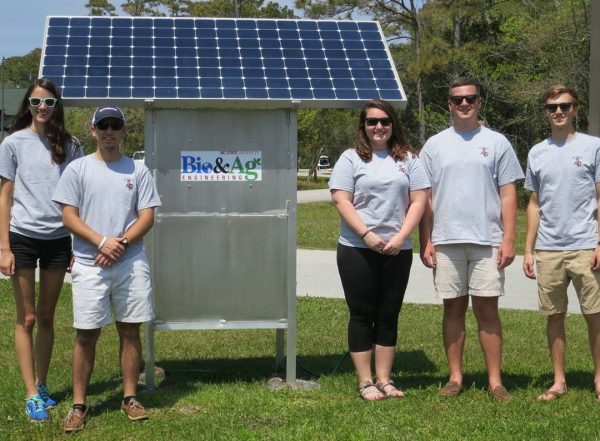By Laura Riddle
When it rains, it pours. Just ask water resources engineer Kristen Navaroli. The 2017 Biological and Agricultural Engineering graduate is working on multiple projects that aim to mitigate the effects of climate change and improve living conditions of economically disadvantaged communities local to Raleigh, North Carolina.
“I get to work nationally on projects that can vary from design to more theoretical planning analysis,” she says. “I’m also very fortunate to collaborate with so many brilliant people, from climate scientists, environmental planners, and all disciplines of engineers, to create quality projects that highlight all of our strengths.”
Navaroli knew early in her academic career that she wanted to be an engineer. “I went into BAE knowing I wanted to do something with the environment,” she says. “I knew through researching the program that [the department] had the resources to help me figure that out.”

One aspect unique to BAE programs is the ability for students to apply theory through real-world application. Navaroli recalls learning about stream restoration through field work along Rocky Branch, an urban creek that runs more than a mile through the university campus, and wetland structure through undergraduate research with BAE Professor and Department Extension Lead Mike Burchell.
“Kristen expressed interest in our EPA sponsored wetland monitoring program and spent a summer studying wetland vegetation cover in 16 wetlands across the state,” Burchell says. “She was a joy to work with in the field and always enthusiastic, despite some tough conditions. I think that real-world field experience in wetlands helped her later in both her senior level ecological engineering course and in her Harker’s Island stormwater wetland senior design project. I’m also sure that these additive experiences made her a highly valued prospect when it came to interviewing for her first job after graduation.”
“When you go into design, you see things on the computer, and you lose a sense of scale and magnitude,” Navaroli explains. “Being able to actually get into the field, I think definitely set me up for success.”

She recently presented an assessment for evaluating climate change variables on current and future infrastructure of the Little Indian Creek in California. The project included snow melt and wildfire assessment, which have not traditionally been done in the United States. Their goal is to use the same forecasting model for evaluation of other mountainous regions.
She’s also working on a project for the City of Raleigh to improve its existing stormwater drainage system. The project addresses local flooding concerns and improves the overall infrastructure within the effected neighborhood.
“I’m glad to be working on a local project that improves the quality of life for a historically disadvantaged community,” Navaroli says. “The project will not only improve the roadway drainage, but also incorporates channel design to provide a more natural solution to flood mitigation.”
When asked about future plans, she expresses an interest in climate science. Navaroli also wants to support other women entering STEM professions by letting them know that there aren’t any barriers as to what they can achieve. For now, she says she loves her work and loves that she can do so many different things in her job. “BAE builds a great foundation. [The program] forces you to think critically, apply what you know and prepares you for the real-world challenges.”

